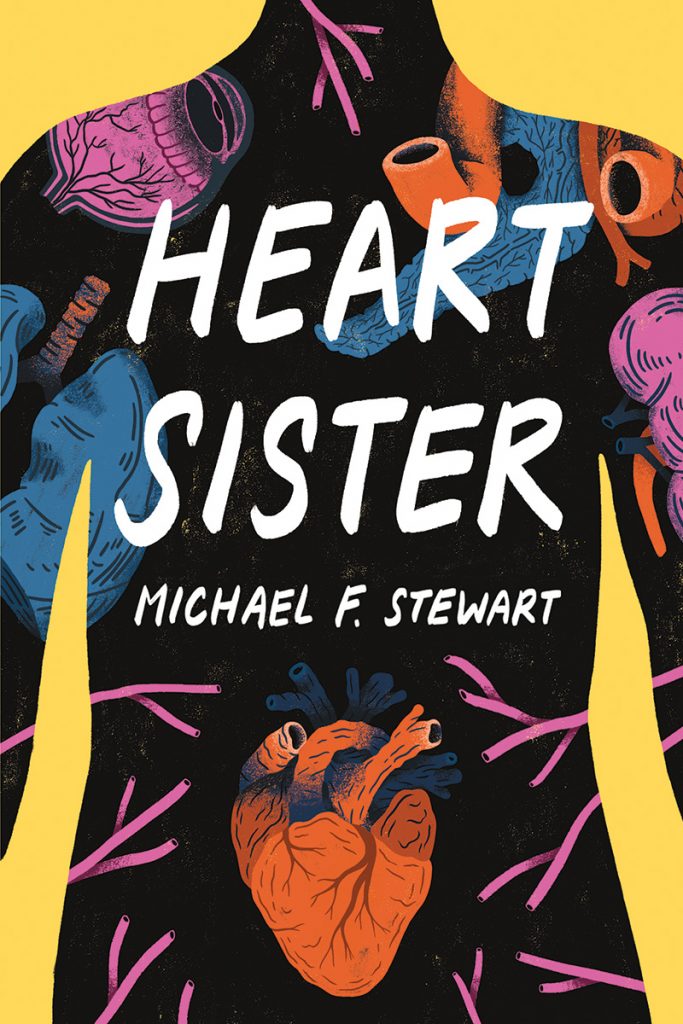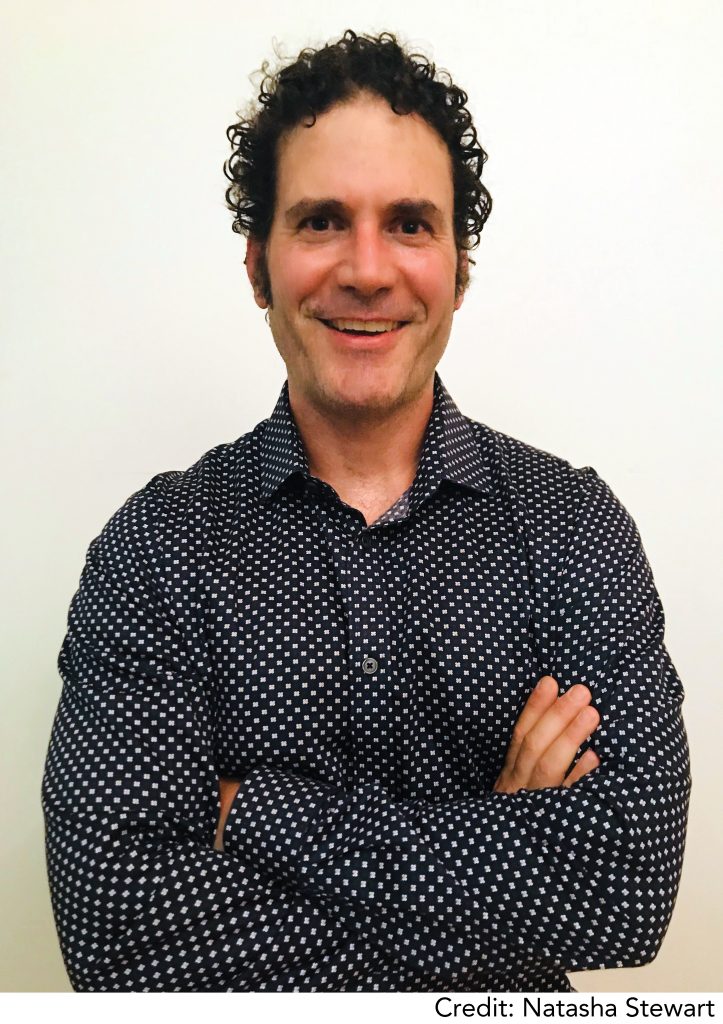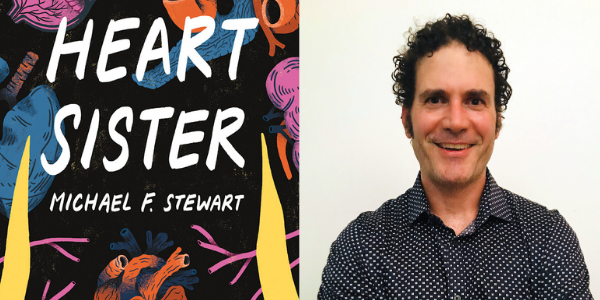
After his twin sister, Minnie, dies in an accident, Emmitt’s world goes sideways. He’s lost his best friend and it feels like the family is falling apart without her. But Minnie was an organ donor and Emmitt soon receives an anonymous thank-you letter from one of the transplant recipients. Inspiration strikes, and he decides to try and put his sister back together, in spirit.
He’s going to track down each organ recipient and film them to show his parents the results of Minnie’s selfless act and help them move on. But when each recipient falls short of his expectations and the star of his film, the girl who received his sister’s heart, refuses to meet him, Emmitt has to turn to extreme measures to find her.
What he doesn’t know is that his “heart sister” is hiding an agonizing secret, one that could push Emmitt to the breaking point.
Heart Sister is a YA novel coming out September 22. In this Q&A, author Michael F. Stewart explains where he got his inspiration for this unique story, discusses his writing process and offers advice for young aspiring writers.
* * *
1. How does an idea for a story develop for you?
MFS: Where do my ideas come from anyway? Anyone’s ideas?
Tolkien has a great quote about where story comes from that I picked up from the Odyssey Writers Workshop:
“One writes such a story not out of the leaves of trees still to be observed, not by means of botany and soil-science: but it grows like a seed in the dark out of the leaf-mould of the mind: out of all that has been seen or thought or read, that has long ago been forgotten, descending into the deeps.”
Neil Gaiman calls it a compost heap. That’s more likely in my case. Gaiman also says that “Ideas are a confluence. Two things coming together.”
And that is my experience, except it’s more than two things. I find story ideas are like puzzles, and you never really know when two pieces will fit together until you try, or until they just do.
Oftentimes I find the best ideas come from constraints. For example, a publisher may ask me to write something but it has to deal with immigration issues and be science fiction. Essentially a constraint is just a puzzle piece I don’t have to find. Heart Sister was like that.

2. What inspired the idea for Heart Sister?
MFS: Heart Sister is special because it started with a simple constraint. I wanted to write a thank you to the donor and donor family of my big brother’s heart. That was the initial puzzle piece.
It’s also the piece that carried me through—that feeling of unbelievable gratitude. My brother was born with a congenital heart defect. He had never been fully “healthy.” That letter at the start of the book? That’s partially his experience. He was protected. Protected from even crying too hard, playing too hard. So when, on one fateful New Years Eve, I got a call telling me my brother was getting a new heart…There is NO greater gift.
My whole family rushed to the hospital from across the country. The operation was more difficult than anyone could have imagined, but the staff were so heroic and my brother—such a fighter. Today, he’s well and healthy and there are so many people to thank, but it starts with a donor and a donor family.
3. What were some of the challenges in writing this story?
MFS: The problem with any story with a “purpose” is you need to be really careful not to preach. We ALL know when we’re being “talked to,” but any thank-you would have to be in support of organ donation, right? That makes sense. And there are a lot of stakeholders in the organ donation community who were going to want me to treat the subject matter with very delicate hands. But stories need conflict too. Without conflict they’re journal entries or essays, not stories. If I wanted to write a thank-you note like that, I’d have been better off to write just that: a letter. So for a story to work, my main character, Emmitt, needed to start out on one side of the coin and end up on the other, he would have to start against organ donation. That was another puzzle piece. I wanted the main character to start out against organ donation and end up being an advocate, but that couldn’t really be what the story was about or it would be didactic. So it became a matter of how I was going to get him there? The answer was that he’d try to bring his sister back by collecting all of the people that received her organs, in order to help his mom and dad through their grief.
I’ve always been interested in virtual reality. It’s part of my leaf-mould-compost. I’m a big believer in all sorts of types of storytelling, not just the printed page, and I write screenplays, so it made sense that digital storytelling would be a way of bringing someone back in spirit. What’s the closest thing to reality? Virtual reality. So that was the final missing puzzle piece.
What’s at stake? How does he do this and what obstacles does he face? What happens? These were all things that came after the inspiration and something I hope you’ll read about in the book!
4. What was your favorite thing about writing this book?
Okay, this is going to sound pretty cliché, but it’s a book of my heart. I wrote it without any kind of commercial expectation. My middle brother couldn’t make it past page one without crying. I couldn’t finish my final proof without being in tears. Maybe it’s because it’s a book of more than one heart?
5. Do you have any advice for young readers who want to write their own stories?
Don’t be afraid to make your protagonist hurt. Put them through a nightmare, or whatever their nightmare looks like, design it specially for them, that’s your job. It sounds obvious but many writers are so in love with their protagonist that they fail to make life difficult for them. They don’t want to hurt them. Do it. Hurt them. It’s your job. Only through immense pressure is coal transformed into a diamond. It’s what will keep the reader reading.

Michael F. Stewart is the Claymore Award winning author of The Boy Who Swallows Flies and many books for young people in various genres, including Ray Vs. the Meaning of Life. He is also a screenwriter and television and video game writer. Michael lives in Ottawa.


